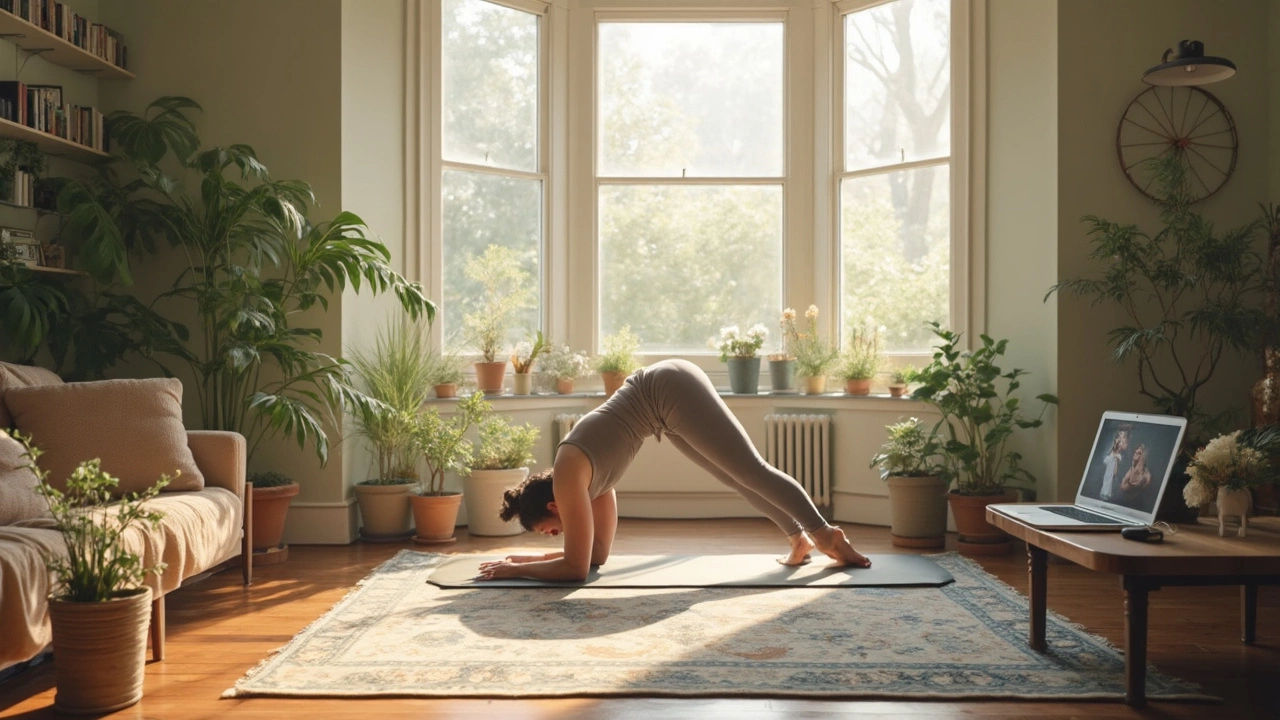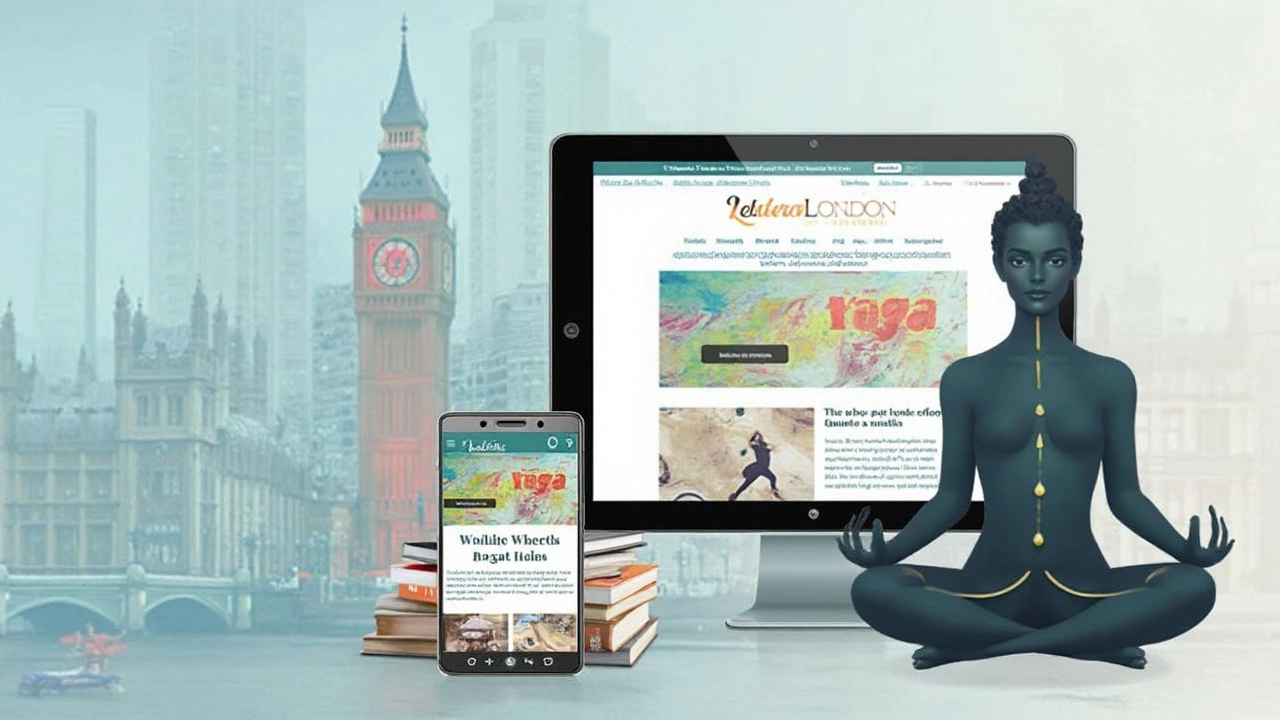Can You Learn Yoga by Yourself? Exploring Self-Study in Yoga

Have you ever dreamed of turning your living room into a yoga studio? The good news is, you totally can! Many people are curious if jumping into the world of yoga solo is doable, and, spoiler alert, it absolutely is. With a bit of guidance, some discipline, and the right tools, you can start practicing yoga without ever stepping into a studio.
First things first, think about why you're interested in learning yoga on your own. Is it because you're juggling a busy schedule, or perhaps you just enjoy having that personal space? It’s essential to understand your motivation as it can drive how you shape your own practice.
- Why Consider Learning Yoga Alone?
- Essential Tools and Resources
- Creating a Comfortable Home Practice
- Staying Safe and Motivated
Why Consider Learning Yoga Alone?
Diving into yoga on your own might sound a bit daunting at first, but it opens up a world of freedom and flexibility. The biggest perk? You get to be your own boss. With self-study yoga, you're not tied down to any schedule. You decide when and where to hit the mat. Need to fit in a quick session at sunrise or unwind during a late-night stretch? Go for it!
Another upside is the comfort of being in your own space. Some folks feel a bit self-conscious practicing in front of others, especially when trying out new poses. Practicing alone lets you experiment and learn without worrying about onlookers. It's just you, your mat, and maybe a curious pet joining in.
Plus, with the vast ocean of resources available online, learning yoga at home has never been easier. Whether it’s watching tutorials on YouTube, following apps, or reading guides, you’ve got tons of tools at your fingertips. You can tailor your home yoga practice to match your skill level and goals, be it mastering a challenging pose or just enjoying a peaceful meditation.
And let’s be honest, sometimes life gets hectic. Not having to commute to a studio can save you a bunch of time and money. It’s a win-win—you get to enjoy the benefits of yoga while keeping things economical.
Ultimately, choosing to learn yoga alone is about crafting a practice that fits perfectly with your lifestyle. It's personal, adaptable, and incredibly rewarding.
Essential Tools and Resources
So, you're ready to kick off your home yoga practice. Great! Before you begin, it’s good to have some basic gear and resources in your corner. Fortunately, you don’t need a huge investment to start your self-study yoga journey.
First up, the yoga mat. Sure, you can just roll with a towel in the beginning, but a good mat can make all the difference. Non-slip mats prevent sliding around during poses, crucial for safety and comfort. Look for ones that are the right thickness for you—thicker mats are comfier for kneeling poses but may make balancing slightly tricky.
Next, props can be quite handy. Blocks, straps, and a bolster can open up a range of poses and help accommodate your flexibility. Don’t sweat it if you don't have these; household items like books can double as blocks, and a scarf works as a strap.
Now, thinking about resources, the digital world is your friend. There are countless apps and YouTube channels dedicated to yoga for every level. Popular names like Yoga with Adriene offer free content perfect for beginners. You might also want to look into apps like Down Dog or Daily Yoga for structured sessions that you can customize based on time, style, and difficulty.
Finally, consider subscribing to an online yoga platform. Platforms like Glo or Gaia offer a variety of classes taught by different instructors, providing the feel of being in a studio but in your comfiest homewear.
And here’s one more tip for ya: keep a journal. Jot down how each session feels, any poses that were tricky, and your progress over time. This will not only track your growth but also enhance self-awareness in your practice.

Creating a Comfortable Home Practice
Setting up your own little yoga haven at home can really make a difference in how you approach your self-study yoga. You'll want to carve out a space that feels inviting, where you can just roll out your mat and escape for a while.
Start with the basics. Choose a quiet corner in your house where you won't get disturbed. Yoga is all about focus, so having a calm environment is super helpful. Throw in some plants or cushions if you're feeling fancy, but really, all you need is enough space to move around freely.
- Yoga Mat: A good quality mat is non-negotiable. It keeps you steady and protects your joints, especially during those trickier poses. A thick mat (about 5mm) works best for beginners.
- Props: Yoga blocks, straps, and a reliable bolster can help you ease into poses or provide support when needed. No need to buy the most expensive ones—start simple and see what works for you.
- Tech Setup: If you're following online classes, make sure your device is charged and has a stand so you can easily see it while practicing. There's nothing worse than a mid-session battery crisis!
Don't forget to set the mood. Soft lighting can transform your home practice into a mini retreat. Some folks like a splash of essential oils or a calming playlist to help them get in the zone.
A routine is key to sticking with home yoga practice. Whether it's a quick morning stretch or a longer evening session, put it on your calendar the same way you would a meeting or an event. Consistency is your best friend here.
The cool part is, as you build your routine, you get to sprinkle in your personal flavor. Love meditation? Add a few minutes at the end. Feeling energetic? Blend in some cardio-focused flows. It’s your space, so make it work for you.
Staying Safe and Motivated
Diving into self-study yoga can be super rewarding, but safety comes first. Injuries are no fun, and they can put a halt to your progress. So, how do you keep things secure on your yoga journey?
Start with mastering the basics. Understanding the foundational poses correctly is crucial. Websites and apps with instructional videos can be particularly handy. Look for content from certified yoga teachers, as this ensures you're getting trustworthy advice.
Consider recording your sessions or using a mirror. Watching your form can help you catch mistakes and ensure you're aligning your body properly. This can greatly reduce the risk of injury and improve your technique over time.
Staying motivated might seem tricky when you're flying solo. It’s easy to skip a day here and there, but consistency is key. Here are some tips to keep you on track:
- Set clear goals: Whether it's a certain number of sessions per week or achieving a specific pose, clear goals can keep you motivated.
- Create a schedule: Dedicate time each day or week for your practice. It's like an appointment with yourself. Don’t skip it!
- Mix it up: To prevent boredom, incorporate different styles of yoga or focus on various aspects like flexibility one day and strength the next.
- Track progress: Keep a journal of your sessions. Noting what went well or what needs improvement can help you see your progress over time.
- Join online communities: Digital yoga communities are a great space for connecting with other learners, sharing progress, and exchanging tips.
Fun fact: A survey revealed that about 90% of people who practice yoga feel a strong sense of community, even if they're practicing alone. Online forums and groups can offer that social connection even without physical presence.
So go ahead, roll out your mat, and enjoy your journey into home yoga practice. Safety and motivation are all about balance—just like yoga itself!
